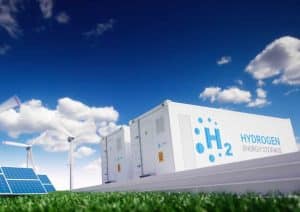Despite the current wave of enthusiasm about the potential of hydrogen, there is much discussion and much uncertainty about the role of synthetic fuels. If you follow the current debate, you sometimes get the impression that E-Fuels are either another saviour or a spawn of evil.
In short, it is a question of using green electricity and water by electrolysis to produce so-called “green” hydrogen in a sustainable way. If this is processed, for example by turning it into methane with the carbon dioxide from biogas plants, this is referred to as methanisation. It can also be used to produce other gaseous or liquid hydrocarbon-containing substances, such as methanol or synthetic fuel (power-to-liquid, PtL), which can then be used in internal combustion engines as before.
This is where the problem lies: Some stakeholders fear that the Power-to-X process will be used to misuse the positive image of green hydrogen so that inefficient combustion engines can continue to be used in the mobility sector for as long as possible. The advantages would be that these fuels would indeed be cleaner and more sustainable than petrol and diesel. This would also prevent additional CO2 from being released into the air, but would only use the carbon dioxide that was already in the atmosphere anyway.
The disadvantages, however, would be that a comparatively inefficient technology would continue to be used and the switch to electric drives would be delayed. In addition, the large corporations from the automotive and mineral oil industry would continue to remain “in power”. And private transport could also continue to grow unabated.
It is now clear that a complete electrification, the All-Electric-World, will not come because there are industries that will continue to depend on a material energy source.
…
read more in H2-international February 2020


























The problem with this argument is that electrolytic (green) hydrogen for transport is more inefficient than current ICEs supply chains. Generator to wheel for electrolytic hydrogen is around 20%. Sure it probably beats further transforming the electrolytic hydrogen into a synthetic fuel for use in an ICE, but there other cheaper ways to get clean synthetic fuels that don’t start with electrolysis.
And I’m afraid you get large corporations in this game whatever you do.